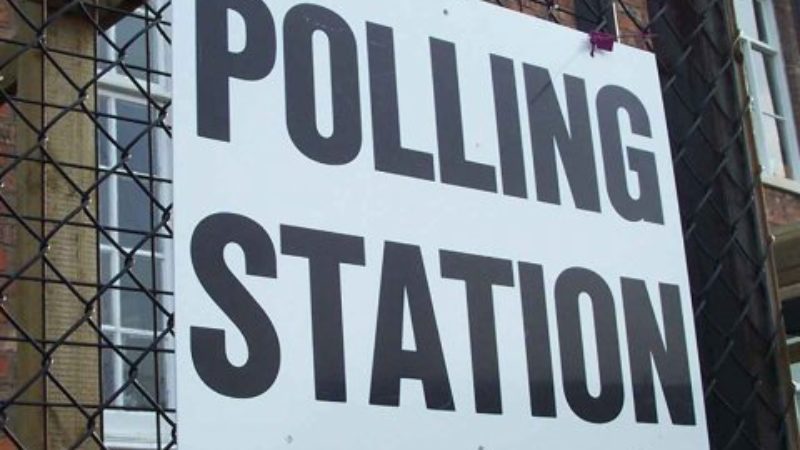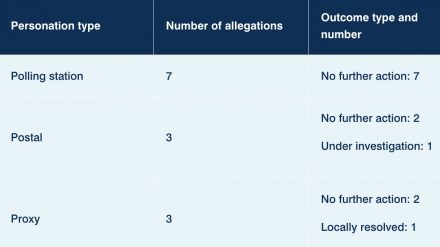
Last week, London mayor Sadiq Khan warned the Tories’ introduction of ID requirements for voters is “designed to rig the next election” by stopping younger and historically marginalised people from voting.
The Electoral Commission has even warned recently too that the Tories have “opened themselves up” to the charge the rules are designed to benefit them – and that government plans to set wider “priorities” for the Commission this week are like “one team telling the umpire how to enforce the rules”.
Groups affected by voter ID more likely to back Labour
The voter identification requirements make it more difficult for those who are typically more likely to support Labour to vote at all, from women, ethnic minorities and renters to disabled, young and unemployed people.
After the 2019 General Election, IPSOS estimated how voters voted:
- Labour had a 43 point lead among voters aged 18-24, but the biggest change was among 35-54 year olds, who saw a three point rise in the Conservatives’ vote share and 11 point fall for Labour.
- There was a gender gap, with the Conservatives ahead of Labour by 15 points among men, and by nine points among women.
- Among Black and ethnic minority voters, Labour led the Conservatives by 64% to 20%, while among white voters the Conservatives led by 48% to 29%.
- Those living in rented housing were less likely to vote Conservative.
No prosecutions for using others’ votes in 2022
The Voter Identification Regulations were introduced in 2022. Government claimed there was a danger of ‘personation’, that is, the electoral crime of pretending to be someone else to use their vote.
So, how many personation crimes were prosecuted in 2022? None. How many allegations of personation in polling stations? Seven, and no further action was taken in any of those cases because there was no evidence or insufficient evidence.
Prior to the last local elections, the Electoral Commission led a campaign to raise awareness of the need for identification.
It subsequently reported that people from disadvantaged backgrounds are less likely to have photo ID than other groups. There was a below average level of awareness particularly among those who do not identify as White British (82% aware compared with 93% for white respondents).
Make no mistake: the Tories’ introduction of voter ID is designed to rig the next election by stopping younger and historically marginalised people from voting. Do not let them.
Sign up for your free photo ID now and RT to spread the word ⬇️ https://t.co/YZJDSoyHDl pic.twitter.com/uBx70DgEFe
— Sadiq Khan (@SadiqKhan) January 23, 2024
On top of this the young, the unemployed, those who rent social housing are all less likely to have photo ID than the average person.
The reasons are plain – people who are younger, poorer, and less likely to own a car, are less likely to have a passport or driving licence. Compared to homeowners, tenants are more likely to move house frequently making it difficult to keep their photo ID up to date, and they may need to re-register to vote each time they move.
We can combat this challenge
These new restrictions could have a chilling effect on voter turnout. Some may be reluctant to vote if they know that they may be turned away at the polling station for not having the correct ID.
There are important questions to answer – like how much has the Electoral Commission has done as an information campaign, how has its budget changed from the last election, and how is it targeting people its research identified were less likely to be able to vote?
Such overt gerrymandering undermines democracy so needs to be combated at every level.
Every citizen should be encouraged to vote and party members should be discussing at all forums how this can be achieved. ID can be a passport, a full or provisional driving licence.
Proof of Age Standards Scheme (PASS) cards, Blue badges, and some concessionary travel cards are also accepted. People without an existing acceptable form of voter ID can get a free Voter Authority Certificate (VAC).
There are things that local government can do now to promote turnout amongst unrepresented groups too. Lewisham councillors explored this some years ago, and a council report highlighting ideas is worth a read here.
Encouraging local newspapers to cover voter issues should increase turnout too.

What’s more, there are multiple resources in other third-party organisations like housing organisations that could creatively support deliberately disenfranchised tenants and other marginalised groups.
At the very least there are opportunities through consumer/tenants groups and representatives to communicate the need for ID. Company newsletters could reduce endless self promotion and give space over to sharing for example, that More imaginative approaches could link ID supplied at tenancy sign up with the ID needed to vote.
There is more that can be done and there’s still time. An active discussion and exploration throughout the Party has the potential to not only help strengthen democracy, it might also prevent a wave of dangerous populism in London too.
If you have anything to share that we should be publishing about this or any other issue involving Labour, on record or strictly anonymously, contact us at [email protected].
Sign up to LabourList’s morning email for everything Labour, every weekday morning.
If you can help sustain our work too through a monthly donation, become one of our supporters here.
And if you or your organisation might be interested in partnering with us on sponsored events or content, email [email protected].




More from LabourList
Which ministers have done the most and fewest broadcast rounds in year one?
‘Welfare reforms still mean a climate of fear. Changes are too little, too late’
Welfare bill: Which MPs are still voting against reforms?